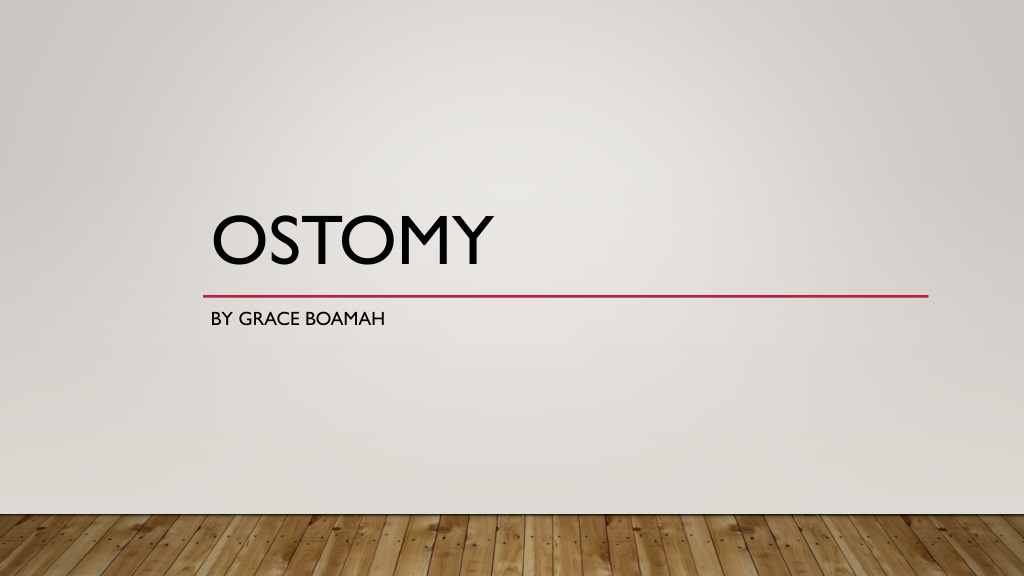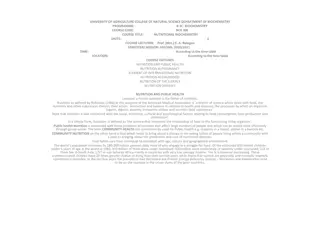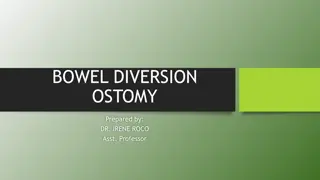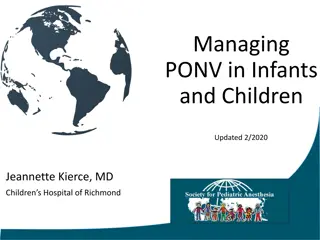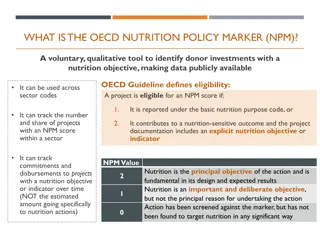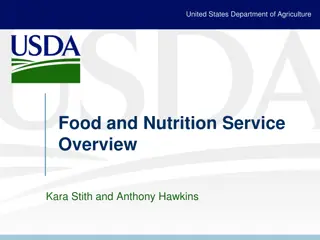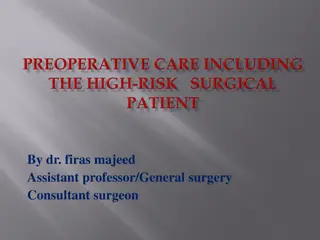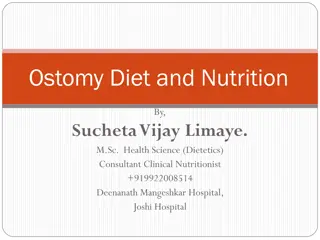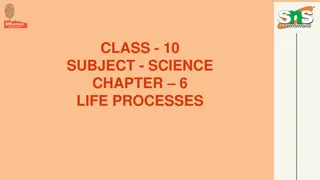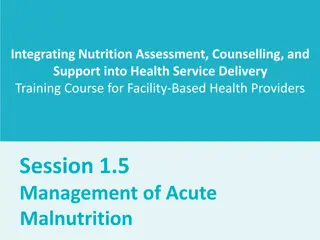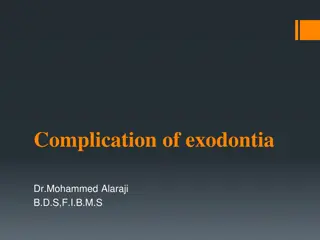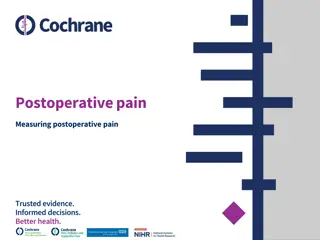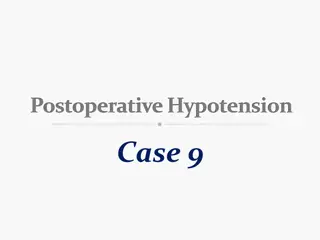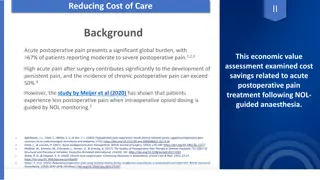Understanding Ostomy: Types, Procedures, and Postoperative Nutrition Care
An ostomy is a surgical procedure done when normal bowel or bladder function is lost due to various reasons like birth defects, diseases, or injuries. It involves creating openings in the abdomen for elimination of waste. This case study highlights a patient with abdominal pain who underwent a partial colectomy and colostomy creation. The postoperative nutrition care focuses on gradually reintroducing foods, monitoring tolerance, and adjusting fiber intake. Factors affecting nutrition planning post-ostomy include type of surgery and stoma location. Anthropometric measures guide energy and protein needs for optimal recovery.
Download Presentation

Please find below an Image/Link to download the presentation.
The content on the website is provided AS IS for your information and personal use only. It may not be sold, licensed, or shared on other websites without obtaining consent from the author. Download presentation by click this link. If you encounter any issues during the download, it is possible that the publisher has removed the file from their server.
E N D
Presentation Transcript
OSTOMY BY GRACE BOAMAH
WHAT IS AN OSTOMY? A surgical procedure performed when normal bowel or bladder function is lost due to birth defects, treatment for diseases such as cancer, or injury. Types of ostomies Colostomy: A colostomy is a surgical procedure that brings a portion of the large intestine through the abdominal wall to carry feces out of the body. Ileostomy: A surgery creating an opening in the abdomen and pulling through a portion of the small intestine to create a stoma.
SUMMARY OF MY CASE STUDY BB is a 61 year old female with increasing abdominal pain Determined to have an intestinal obstruction, underwent immediate surgery resulting in partial colectomy and creation of colostomy. Eating Habits -Watches intake of salt and carbohydrate - She does not cook - Frequently eats out
CASE STUDY Glucose HgbA1C T chol LDL Hemoglobin Hematocrit PMH: T2DM, HTN, osteoarthritis 163 6.5 235 149 10.7 34 (70-99) ( <5.7) ( <200) ( <130) (12-16) (37-47) Tobacco/alcohol: none FamHx: T2DM, HTN; mother BP: 130/89 Weight : 165 lbs UBW: 175lbs Dx: adenocarcinoma of the colon stage IIA Height Weight Idea Body Weight BMI % Weight Lost Medical treatment plan: NPO with ice chips, IV, oral pain meds, consults for oncology, nutrition, and stoma care. 165 120 28.3 6% 5 4
POSTOPERATIVE NUTRITION CARE After surgery, depending on hospital s postop protocol, patient may start eating on day one Eating plan begins with clear liquids and should be advanced to soft and low fiber diet as tolerated. Remember to chew slowly, drink fluids as instructed, monitor food intolerances (stool changes, flatulence), and gradually increase fiber to reduce risk of obstruction. Return to regular diet within 6 to 8 weeks after surgery . The location of the stomach is a factor in the fluid intake.
FACTORS FOR BBS NUTRITION PLANNING Type of surgery influences her nutrition status Stoma at ascending colon is rare More fluid and digestive enzymes in colon Stoma healing is more difficult
ANTHROPOMETRIC MEASURES Energy needs 30-40kcal/kg 54.5 x 30 = 1635kcal ; 54.5 x 40 = 2180kcal 1635 - 2180 kcal/day Protein needs 1.5-2g/kg 54.5 x 1.5 = 81.75 kcal; 54.5 x 2 = 109g 81.7 109 g/day
PES STATEMENT Increase protein needs (NI-5.1) related to total colectomy as evidenced by increase postop nutrient needs. Altered Gl function (NC-1.4) related to partial colectomy and creation of colostomy as evidenced by surgery. Increased nutrient needs (NI-5.1) rated to GI surgery, partial colectomy with colostomy creation as evidenced by ostomy
NUTRITION CARE PLAN Intervention Monitoring Short term goal Promote healing of resected bowel and the stoma Identifying offending foods Understand the impact of the disease on health and nutrition modifications. Oral fluid intake Total energy intake Evaluation keep records of what BB eats and her symptoms Long term goal Excess fluid output Fiber intake Prevent blockage Short term goal: promote healing of resected bowel and the stoma Assess the patient's skin surrounding the stoma See patient biweekly with some blood work to see if her glucose, A1C, LDL, hemoglobin has decreased.
FOODS Loose stool or diarrhea: apple juice, prune juice, dried beans, raw fruit and vegetable, fried, green leafy Foods that thicken: applesauce, mushroom, rice, pasta, tapioca, yogurt Odor: fish, eggs, garlic Gas: beans, broccoli, corn, spinach, cabbage, brussels sprouts
REFERENCES Landmann, R. (2015, May 20). Routine care of patients with an ileostomy or colostomy and management of ostomy complications. Retrieved November 29, 2016, from UpToDate, https://www.uptodate.com/contents/routine-care-of-patients-with-an-ileostomy-or- colostomy-and-management-of-ostomy- complications?source=search_result&search=ostomy&selectedTitle=2~71 Mahan, K. L., Escott-Stump, S., Raymond, J. L., L. Kathleen Mahan MS RD CDE, Sylvia Escott- Stump MA RD LDN, & Janice L Raymond MS RD CD (2011). Krause s food & the nutrition care process (Krause s food & nutrition therapy) (13th ed.). Philadelphia, PA, United States: Elsevier Health Sciences. Lecture Note
